Save energy and money by making modest investments and minor changes around your home. Opportunities for Improvement can be found outside and inside your home:
- Kitchen and bathroom
- Living room, dining room and office
- Bedrooms
- Laundry room and hallway
- Mechanical room
- Outdoors
Kitchen and bathroom
Kitchen
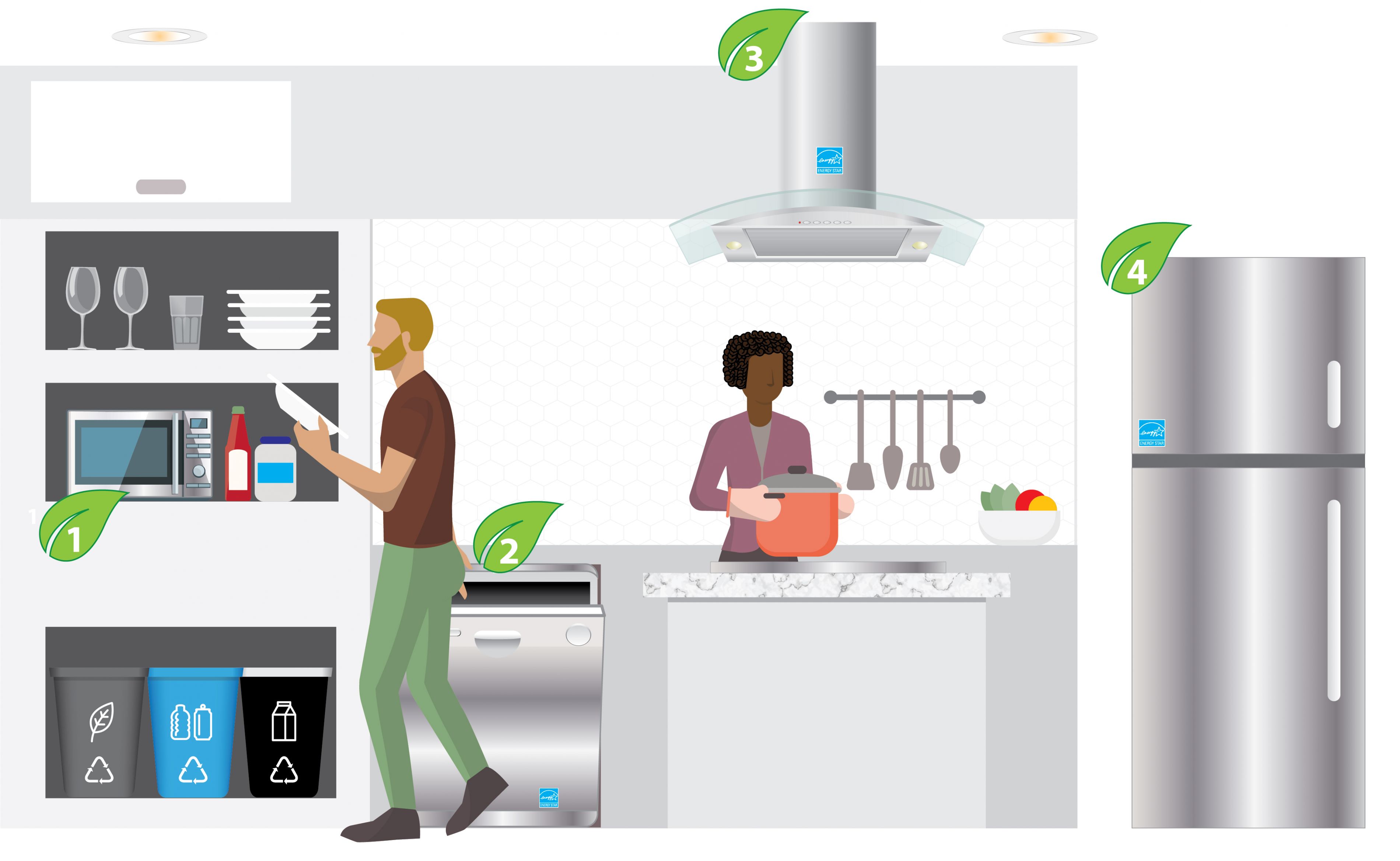
- Use the microwave to reheat food: it’s the most energy-efficient.
- Dishwasher:
- Buy an ENERGY STAR® certified dishwasher: use 12% less energy
- Scrape the dishes, don’t rinse: let the dishwasher do the rest.
- Use the air dry feature.
- Assess each load: use the setting with the best cleaning function in the shortest amount of time.
- Install an ENERGY STAR certified range hood to use up to 70% less energy than a standard one.
- Fridge:
- Shop for an ENERGY STAR certified fridge: use 9 % less energy.
- Allow air to flow: don’t overfill your fridge.
- Keep the fridge away from heat sources (vent, oven, sunlight, etc.).
- For kitchen faucets, install an aerator whose flow rate is less than 7.0 L/min.
Bathroom
.jpg)
- Install a water-saving shower head to use less hot water. Look for one whose flow rate is less than 7.0 L/min . Take a shower instead of a bath to save on hot water costs.
- Use a low-flow toilet that uses 4.8 litres or less per flush to save water.
- Switch to ENERGY STAR certified ventilation fans to use 70% less energy than standard models, and install a timer on the fans.
- Buy a faucet aerator to use less hot water: choose an aerator that delivers less than 4.7 L/min of water.
Living room, dining room and office
Living room
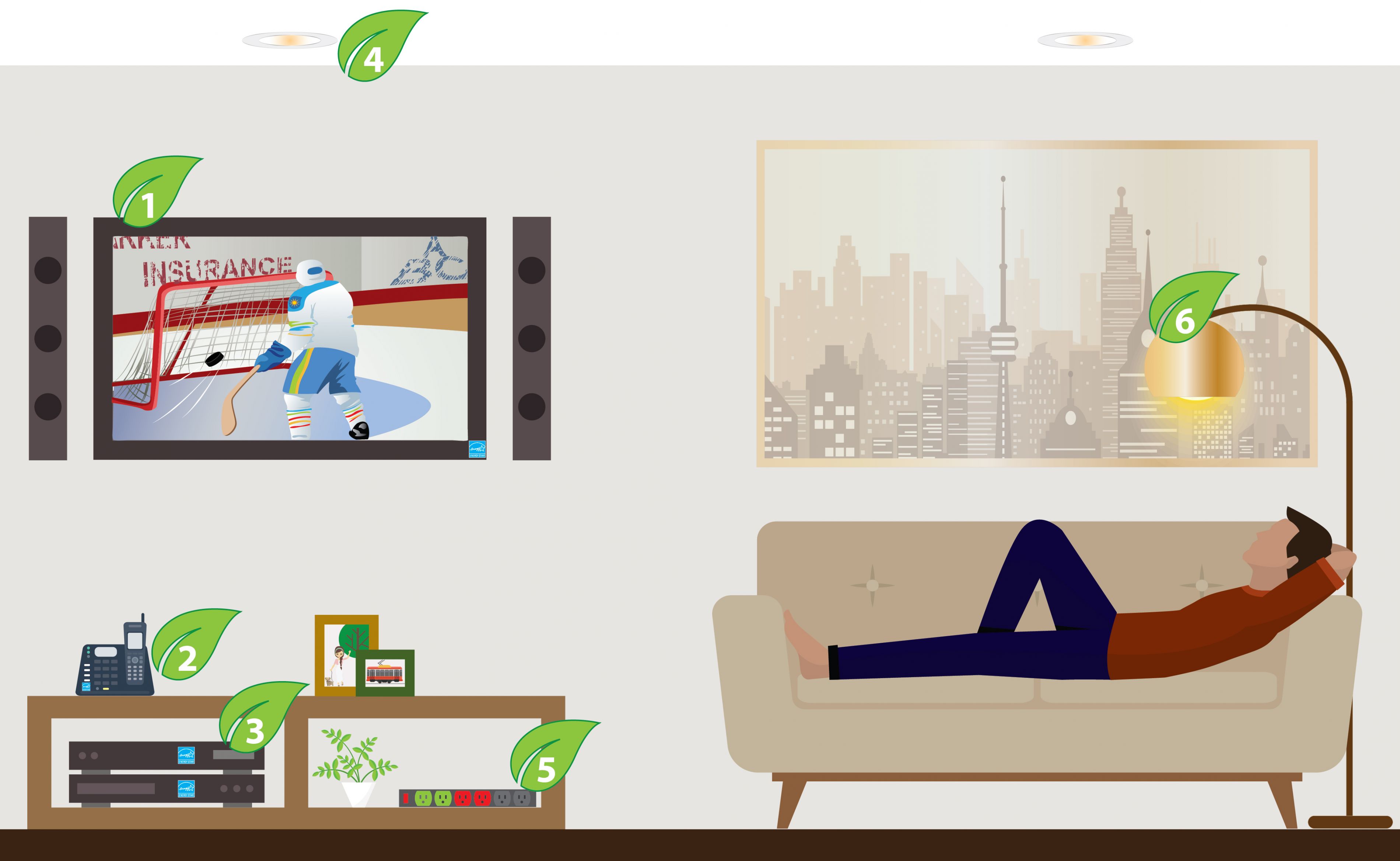
- Look for an ENERGY STAR certified TV when buying a TV to use 25% less energy.
- Find the ENERGY STAR symbol when you buy a cordless phone (40% savings compared to other models).
- Find the ENERGY STAR symbol when you buy audio and video products (up to 70% savings compared to standard models).
- Buy ENERGY STAR certified recessed lighting fixtures (pot lights): use up to 90% less energy than traditional models with incandescent bulbs.
- Use a smart power strip to turn off the power to devices not in use.
- Choose ENERGY STAR certified LED bulbs: they last 15 times longer than incandescent ones.
Dining room
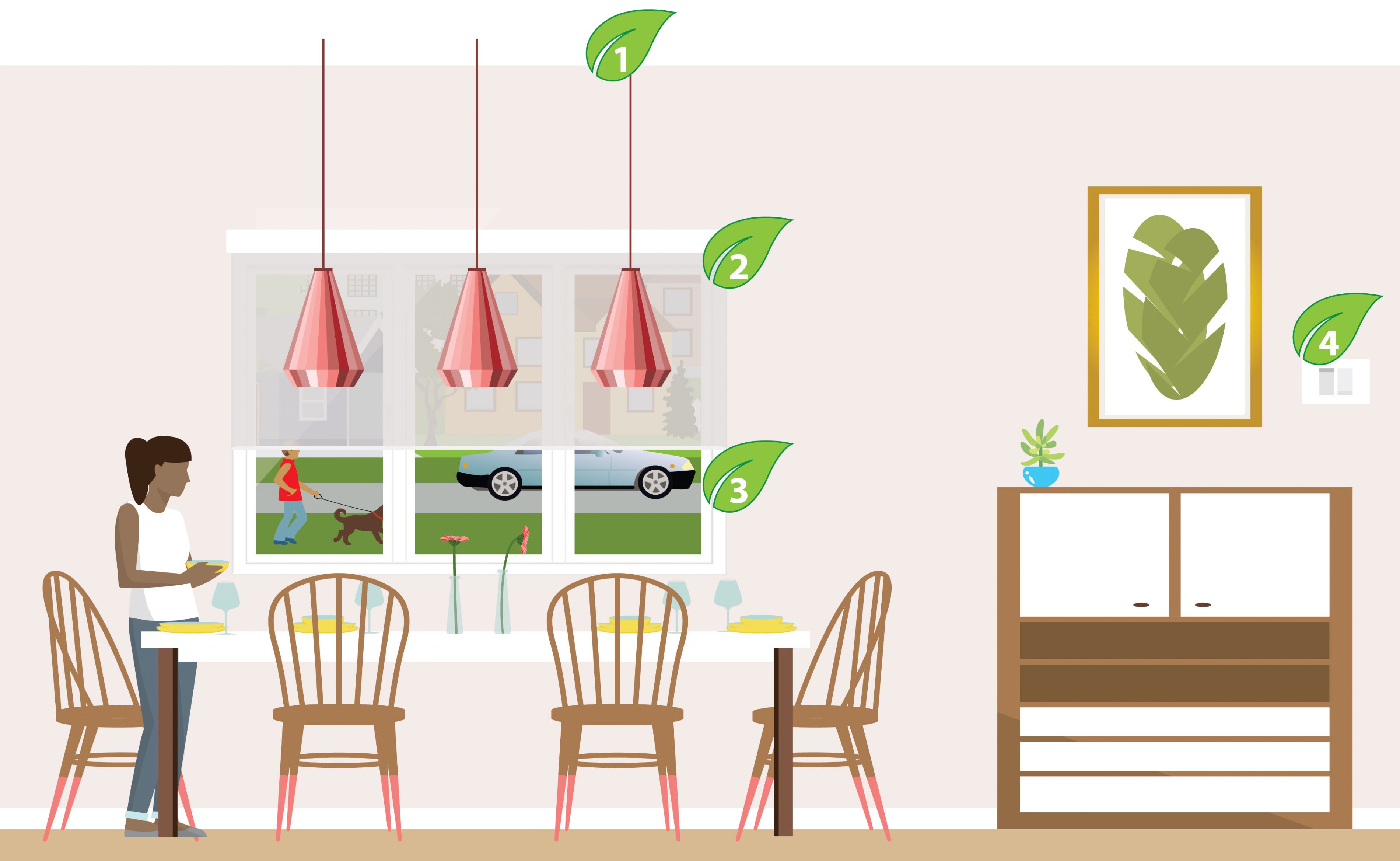
- Choose ENERGY STAR certified light fixtures.
- Use awnings, blinds or drapes to keep direct sunshine from overheating the room in the summer.
- Read Keeping the Heat In to learn about options for upgrading your windows.
- Set the mood: use compatible dimmer switches with your ENERGY STAR certified bulbs to reduce light use. If your baseboards have individual thermostats, set each thermostat to the desired temperature. Set higher temperatures in summer and lower temperatures in winter to save.
Office
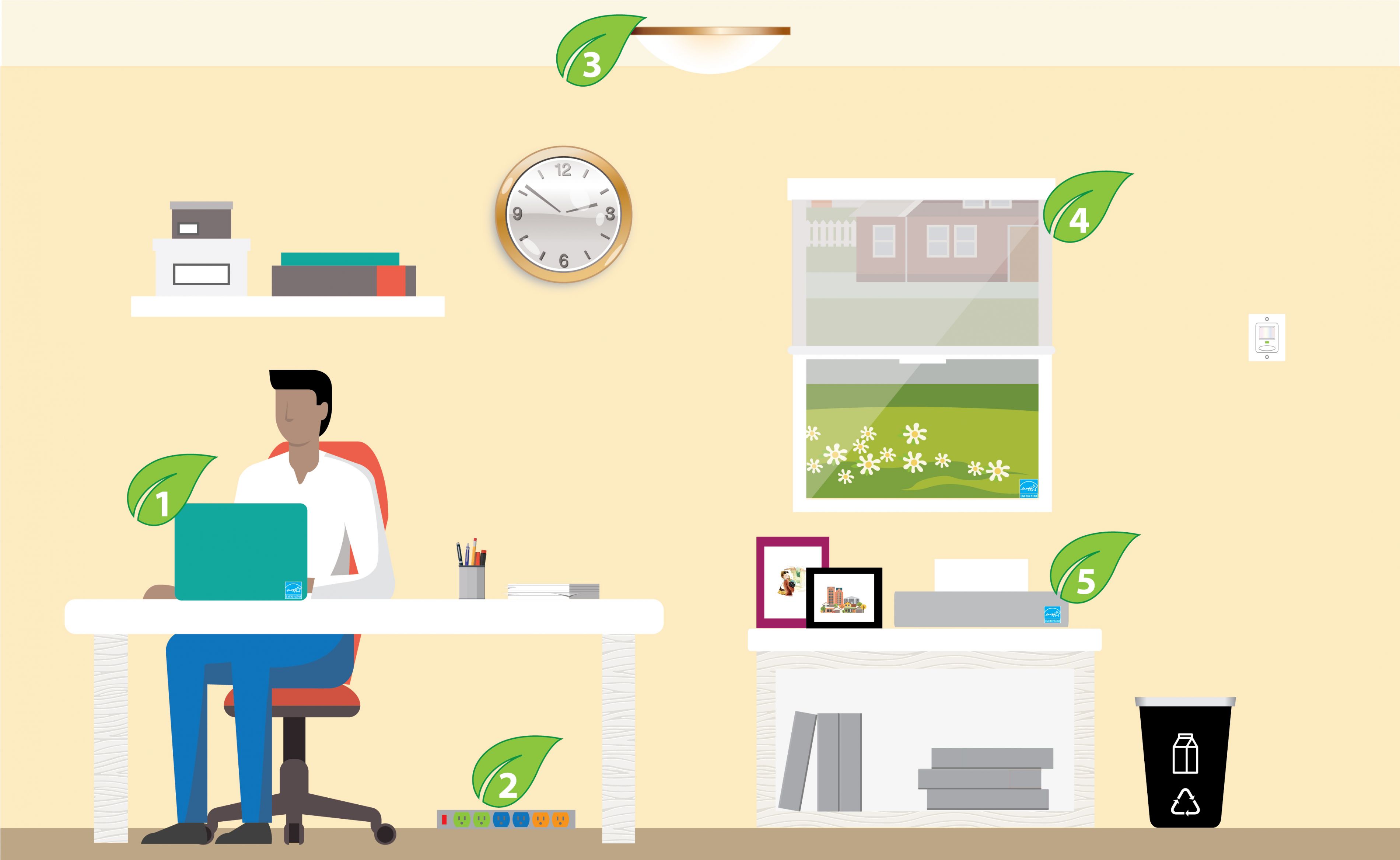
- Enable low power settings on your computer to save energy and help your battery last longer.
- Use a smart power strip to reduce energy waste when equipment is on standby or off.
- Buy ENERGY STAR certified light fixtures to use up to 90% less energy than traditional models with incandescent bulbs.
- Seal areas of air leakage around all window and door casings, mouldings, and baseboards to stop cool air from escaping in summer and warm air from escaping in winter. Read Keeping the Heat In to learn how.
- Purchase ENERGY STAR certified office equipment to use 25% to 40% less energy.
Bedrooms
Primary bedroom
.jpg)
- Install triple-glazed windows with a high insulation rating, especially in walls that receive little direct sunlight, to minimize unwanted heat transfer between conditioned spaces and the outdoors.
- Use ENERGY STAR certified computers or TVs to stream a movie and get 25% more energy savings.
- Purchase ENERGY STAR certified ceiling fans to use 60% less energy. Set the ceiling fan to run counterclockwise in summer for maximum comfort.
- Choose windows that have been awarded the ENERGY STAR Most Efficient mark. They are up to 55% more energy-efficient than standard windows.
- Empty (bleed) the air from radiators once or twice a year so they can fill fully with water and work more efficiently.
Children's room

- Install foam insulation gaskets behind electrical outlet faceplates on exterior walls. Read Keeping the Heat In to learn how.
- Switch to ENERGY STAR certified light bulbs and save up to 90% more energy than incandescent ones.
- Keep air flowing by not obstructing vents or return air grills with furniture.
- Use ENERGY STAR certified computer monitors to save 25% more energy than standard models.
- Seal cracks and openings around penetrations (vents, pipes, etc.) in the walls, ceilings or floors to prevent air from escaping into the walls and roof.
Laundry room and hallway
Laundry room
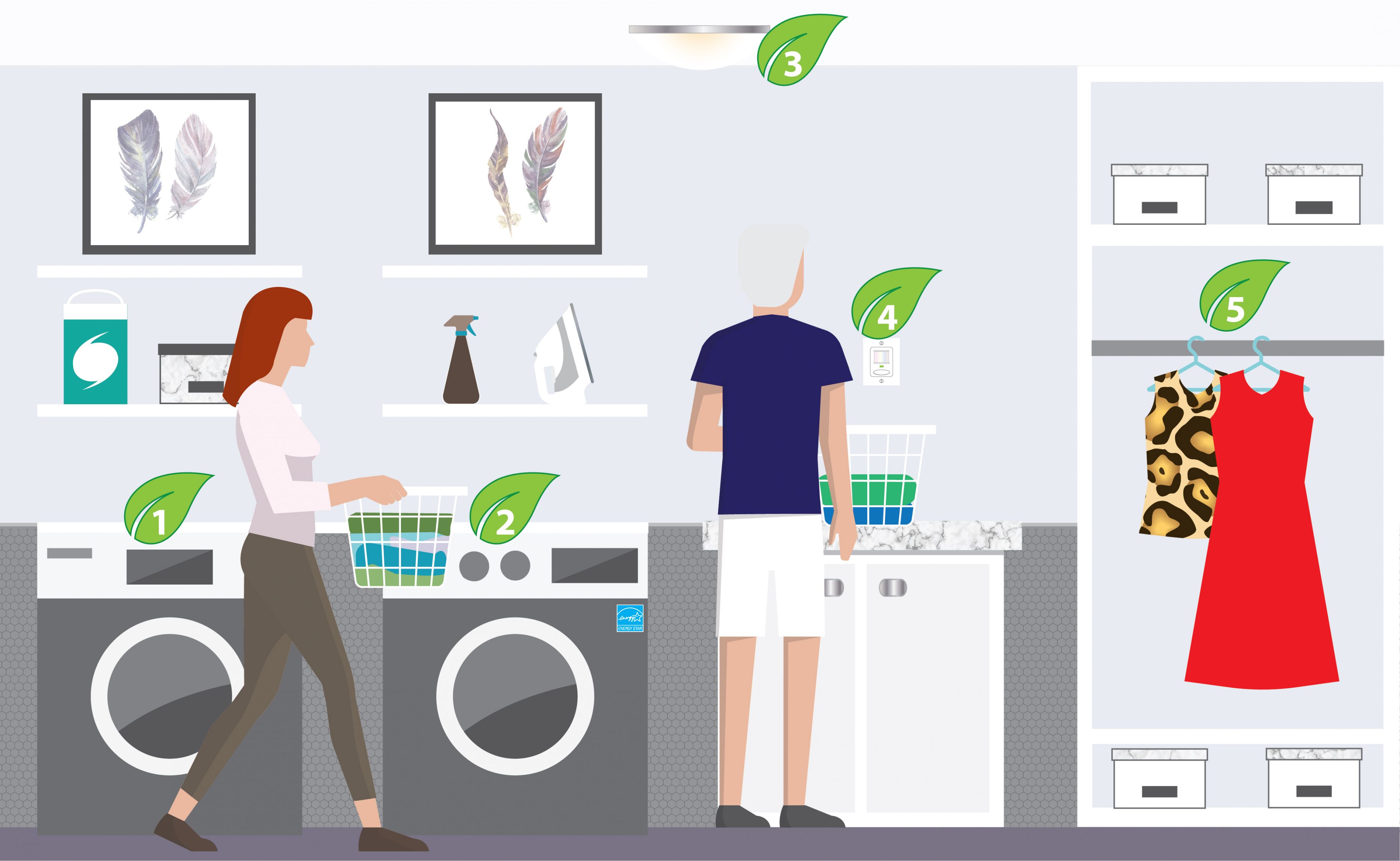
- Washer:
- Buy an ENERGY STAR certified washer: save 25% more energy, use 33% less water than a standard model.
- Choose high-speed or extended spin: removing more water reduces the drying time.
- Fill but not too much: washers operate most efficiently when full.
- Wash in warm or cold water: save the energy needed to heat water.
- Pre soak stained clothes: avoid rewashing.
- Dryer:
- Shop for an ENERGY STAR certified dryer: save 20% more energy compared to other models.
- Clean the lint trap after every load: increase the air flow.
- Don’t dry too much: use the sensor setting or time it just right.
- Don’t fill too much: ensure airflow and reduce the strain on the motor.
- Sort by thickness: put light items in one load, thick items in another.
- Pick ENERGY STAR certified light fixtures: use up to 90% less energy than other models using incandescent bulbs
- Install a motion sensor to reduce your light use
- Try air drying clothes such as delicates and silks
Hallway
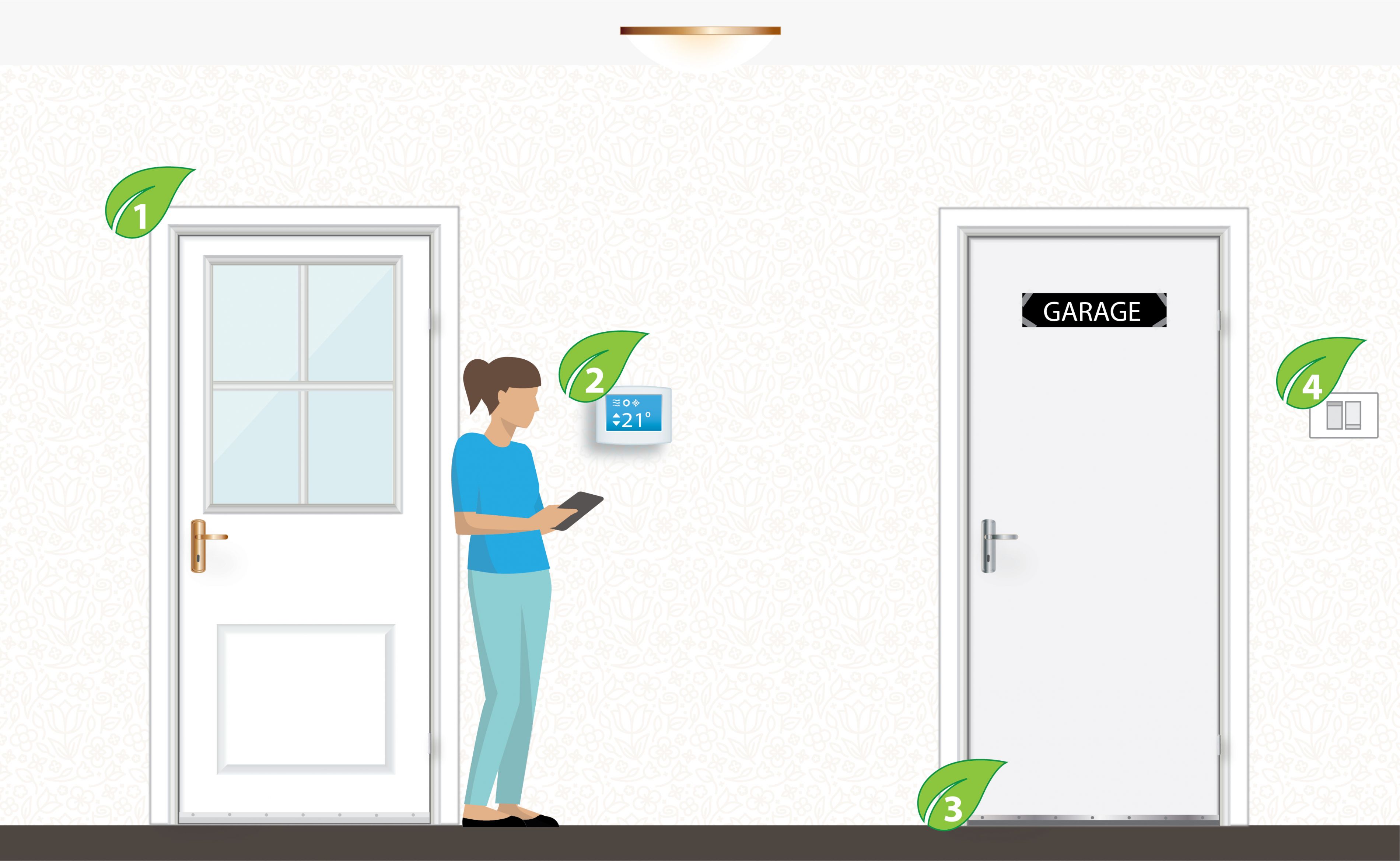
- Choose a more energy-efficient door (up to 25%). An ENERGY STAR exterior door has better insulation, which helps reduce unwanted heat transfer from the conditioned space to the outside.
- Install an ENERGY STAR certified smart thermostat to take control of your cooling.
- Apply weatherstripping around older exterior doors to prevent cool air from escaping in the summer and warm air from escaping in the winter.
- Turn off lights when they are not in use.
Mechanical room*
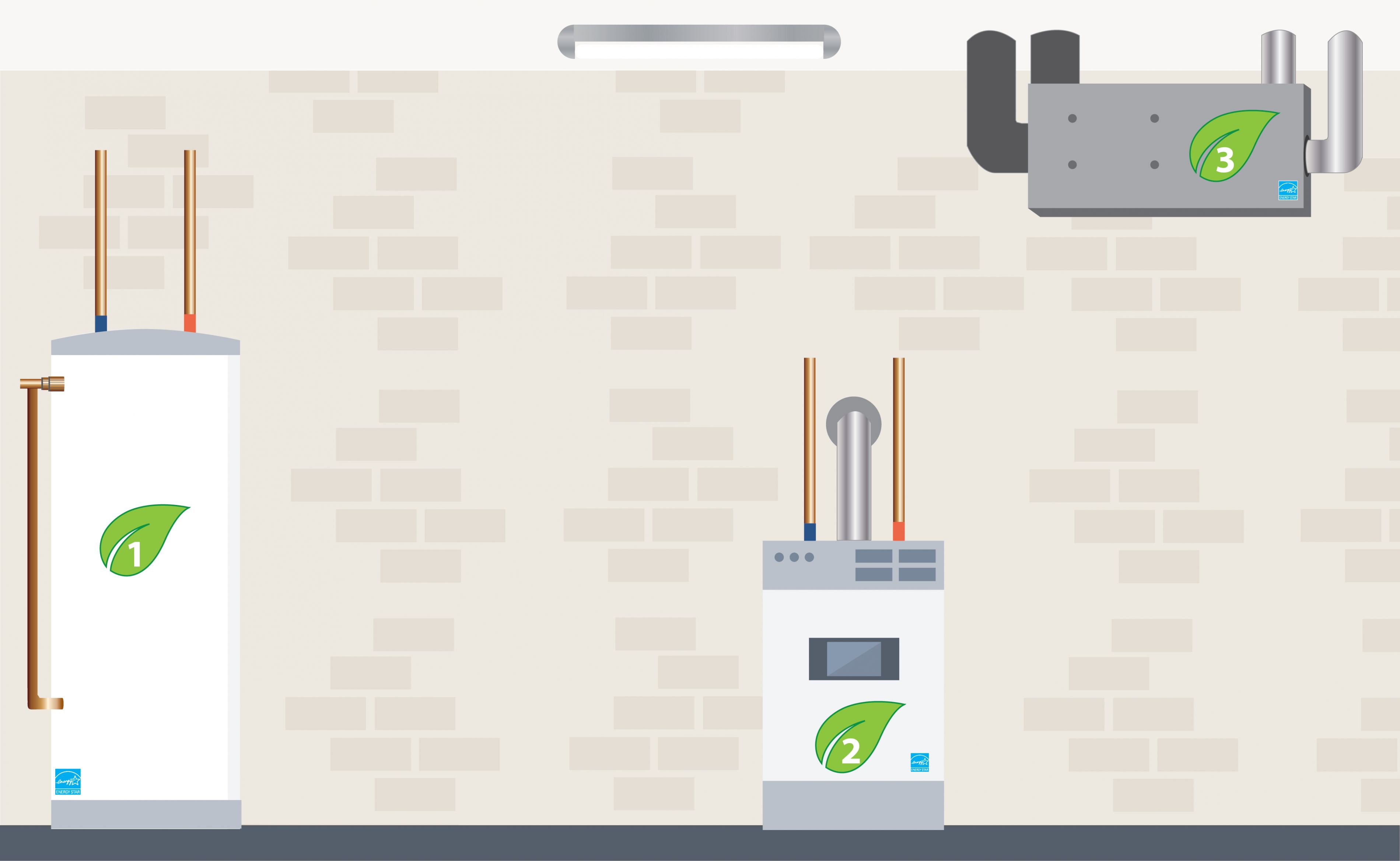
- Hot water tank. Consider ways to reduce water heating costs and water use:
- Insulate hot- and cold- water pipes by covering the first two metres with foam sleeves or insulating wrap with a minimum of RSI 0.7 (R-4) insulation. Leave a 15- cm (6-inch) clearance between the insulation and vent pipes on fuel-fired water heaters.
- Buy an ENERGY STAR certified gas-fired tankless water heater: use 30% less energy because it heats water only when it is needed.
- Install a drain-water heat recovery unit and recover enough heat to save 15 to 20% of the energy required for hot water.
- Boiler:
- Insulate the hot-water pipes to save on heating costs.
- Heat recovery ventilator or energy recovery ventilator systems
- Clean the filters of your heat or energy recovery ventilation system every 3 months to ensure the air is being filtered, and clean the core annually.
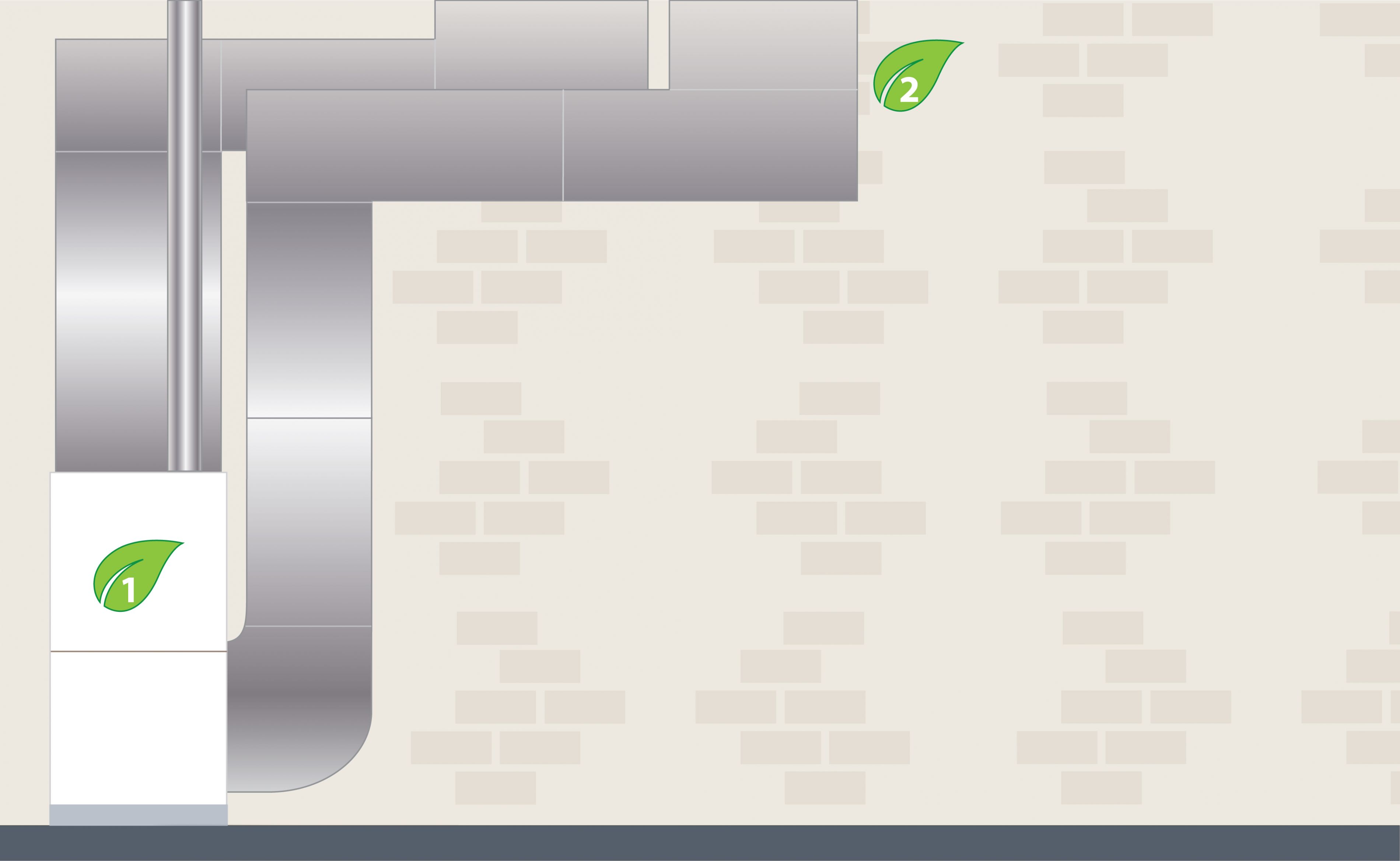
- Furnace:
- Choose an ENERGY STAR certified furnace with an efficiency rating of at least 95% for gas, 85% for oil.
- Look for a gas furnace that has been awarded the ENERGY STAR Most Efficient mark to save even more when you buy .
- Change or clean filters every 3 months or as they become dirty.
- Clean and service regularly: Oil-fired furnaces need annual maintenance but natural gas and propane furnaces should be serviced at least every two years.
- Consider replacing your furnace with an electric heat pump once it reaches end of life. Heat pumps are 2 to 4 times more energy-efficient than traditional heating systems.
- Ducts:
- Seal all supply duct work with aluminum foil duct tape, approved flexible plastic tape or water-based mastic to improve comfort.
- Make sure heating, cooling and ventilation ducts running through basements, crawl spaces or unheated attics are sealed and insulated.
- Ensure your heat, cooling and ventilation distribution system is balanced. Undersized ductwork, leaking ducts, and return air grilles that are inadequate or poorly placed can cause discomfort and higher heating bills. Find a professional to inspect your system if you suspect a heating or cooling problem.
*Important:Consult the owner’s manual about the maintenance of all heating, cooling and ventilation equipment.
Outdoors
Front Yard
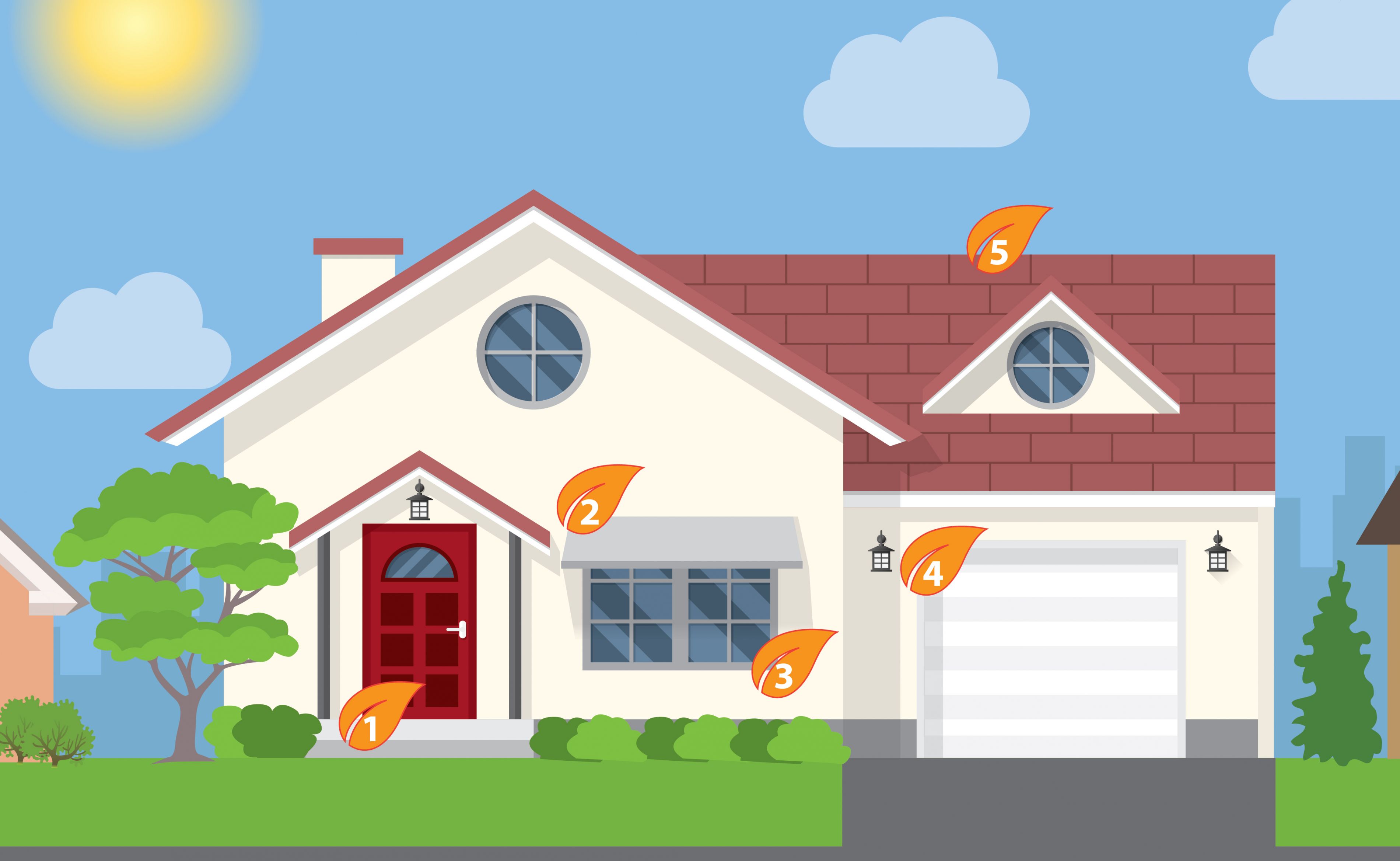
- Weatherstrip doors to keep cooled or warmed air inside.
- Use awnings or strategically positioned deciduous trees to help keep direct sunlight from overheating your home in the summer, and to allow the sunlight to help warm your house in the winter.
- Seal the joints of window casings with flexible caulking if you suspect air is leaking.
- Buy ENERGY STAR certified outdoor light fixtures or bulbs.
- Upgrade the insulation and air seal your home because these are some of the most cost-effective home improvements.
Backyard
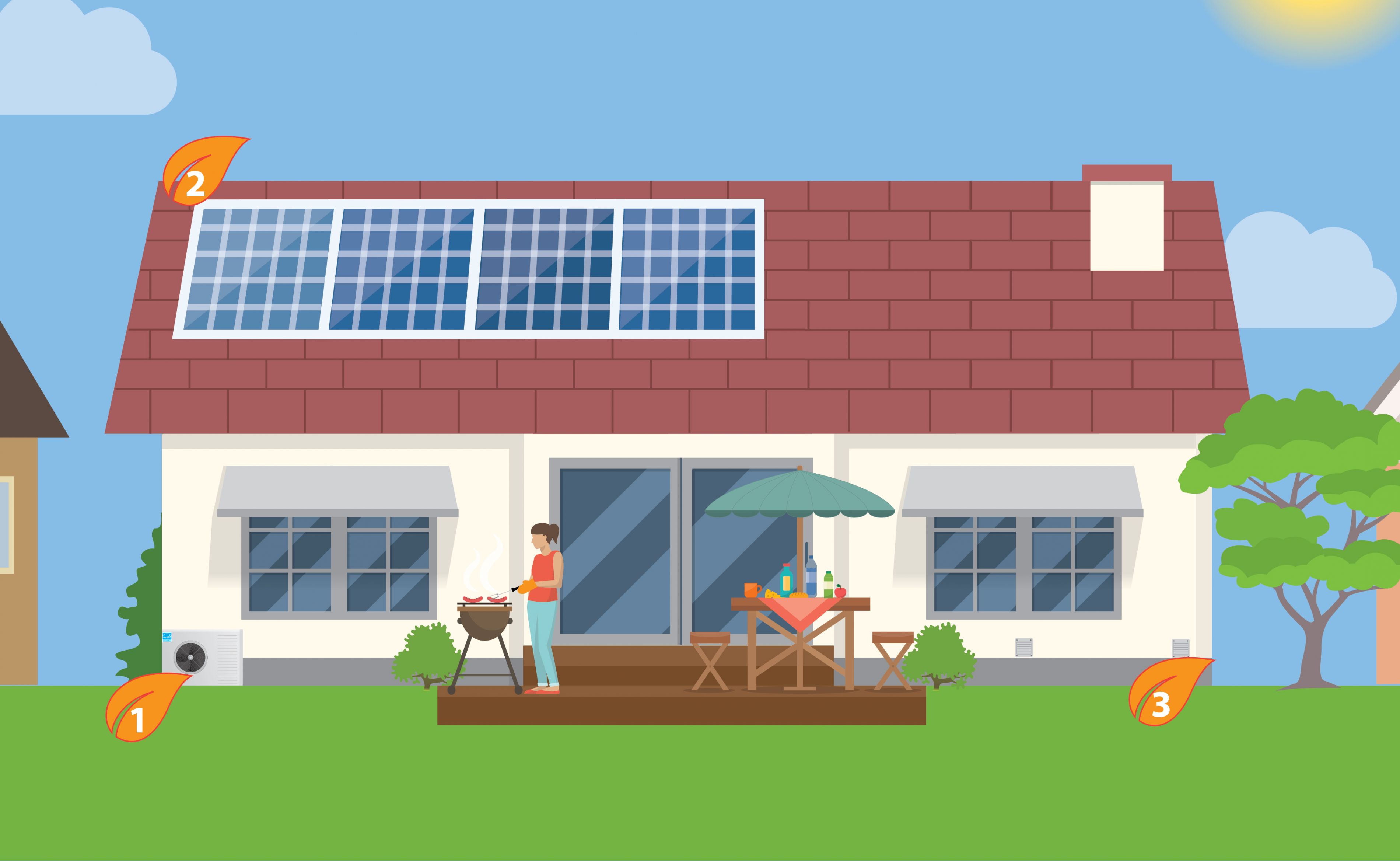
- Look into an air source heat pump (ASHP): it is energy-efficient and can supply both heating and cooling for your home. Keep your ASHP or air conditioner clear of bushes or debris that could restrict air flow.
- Say yes to installing a solar energy system: a safe, reliable, low-maintenance source of electricity that helps reduce your electrical costs and produces no pollution or emissions.
- Keep your heat or energy recovery ventilator running smoothly by inspecting and cleaning outside hoods and screens.
Important: Consult the owner’s manual for maintenance and details of all heating, cooling and ventilation equipment.
Garage
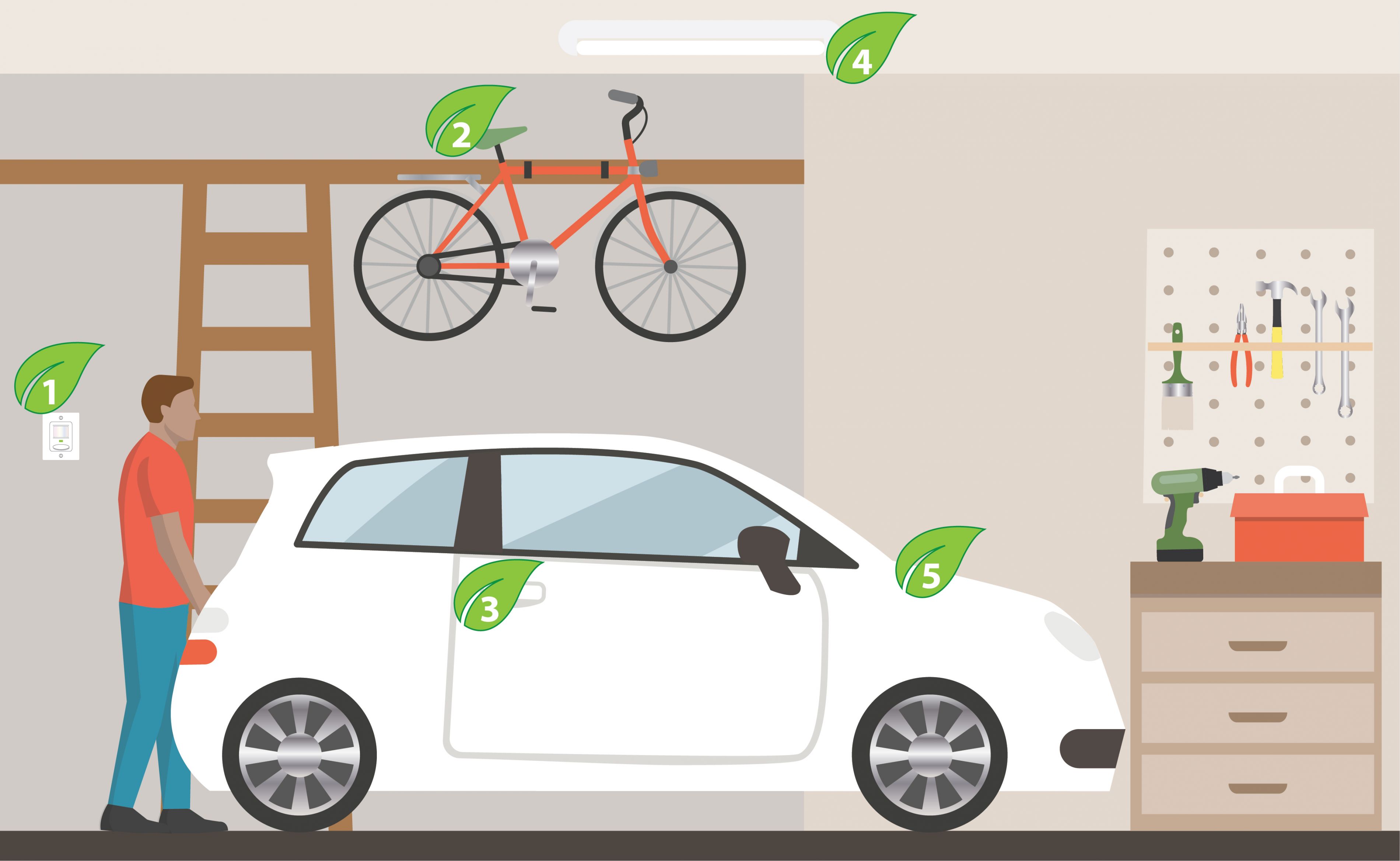
- Install a motion sensor to turn off the lights to use less energy.
- Walk, bike or take public transit to work to save costs.
- Drive in a fuel-efficient manner to save fuel and money and to reduce greenhouse gas emissions. Learn more driving tips.
- Look for ENERGY STAR fixtures or bulbs to save money.
- Buy the most fuel-efficient vehicle that meets your needs.
Would you like to do more?
Know what to expect for a home energy evaluation and how to receive an EnerGuide rating with recommendations on what you can do to improve your home’s energy efficiency.
Learn more about the EnerGuide rating system.
Learn more about heat pumps.
Read more about renovating for energy efficiency.